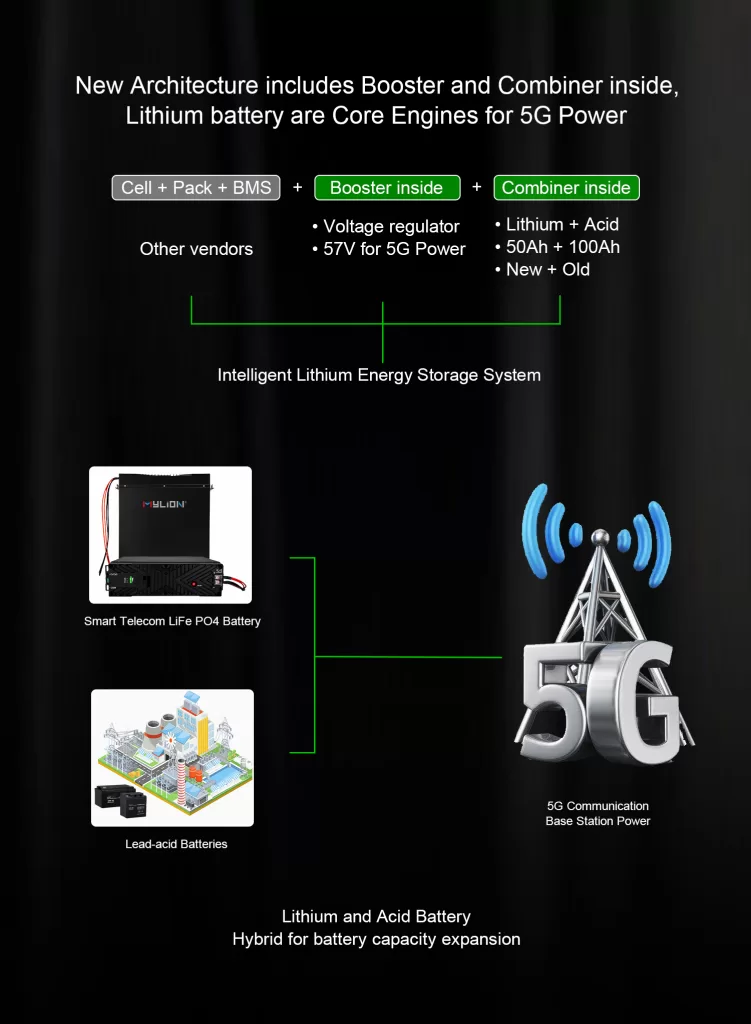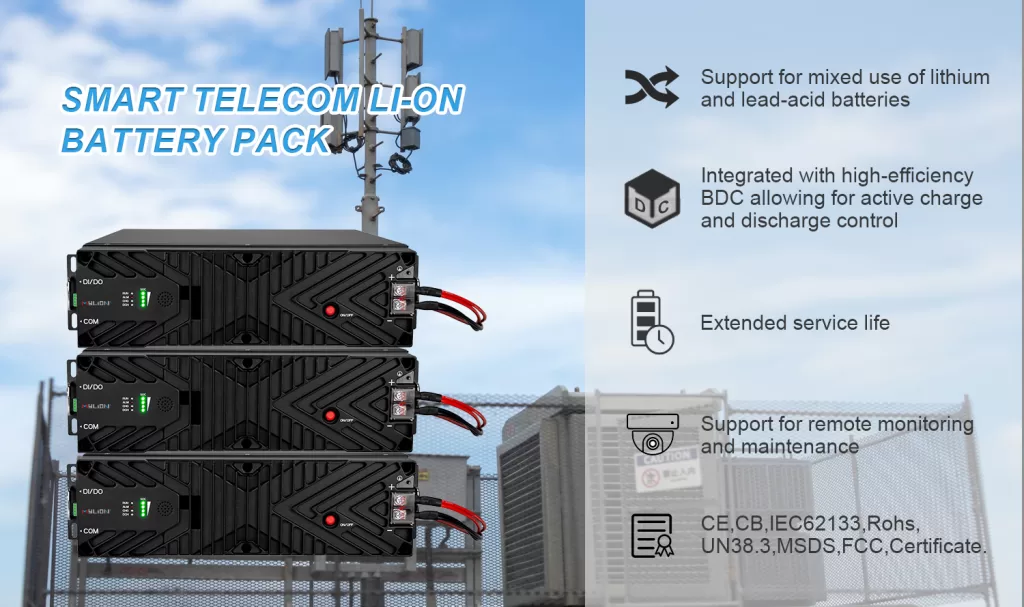Battery Storage Power Station
Introduction
Battery storage power stations have emerged as a crucial component in the transition to a cleaner and more sustainable energy future. As the demand for renewable energy sources continues to grow, the need for effective energy storage solutions becomes increasingly important. Battery storage power stations play a vital role in storing excess energy generated from renewable sources, such as solar and wind, and releasing it when demand is high or when intermittent renewable sources are not producing electricity.
These power stations utilize a group of batteries to store electrical energy, providing a reliable and flexible source of power. Unlike traditional power plants that rely on fossil fuels, battery storage power stations offer a clean and efficient alternative. They can quickly respond to fluctuations in demand and supply, ensuring a stable and reliable electricity grid.
The importance of battery storage power stations lies in their ability to store electricity for later use, which helps to balance the intermittent nature of renewable energy sources. By capturing excess energy during periods of high generation and releasing it during peak demand, battery storage power stations help to optimize the use of renewable energy and reduce reliance on fossil fuel-based power plants.

Battery storage power stations are designed to output their full rated power for several hours, making them ideal for short-term peak power requirements and providing ancillary services to stabilize the grid. These power stations can also be rapidly installed and placed within urban areas, close to customer load, due to their compact size and lack of chimneys or large cooling systems.
The growth of battery storage power stations has been significant in recent years, driven by falling costs and advancements in battery technology. Lithium-ion batteries, in particular, have become the preferred choice for utility-scale storage due to their high energy density, power, and efficiency. The deployment of battery storage projects is expected to increase exponentially in the coming years, with multiple large-scale projects already in development.
However, the expansion of battery storage power stations is not without its challenges. The availability of critical materials, such as lithium, and the environmental impact of mining these materials are areas that need to be addressed. Additionally, ensuring the safety and reliability of battery storage systems is of utmost importance, as incidents of fires and explosions have been reported in some facilities.
In conclusion, battery storage power stations are revolutionizing the energy landscape by providing a clean, flexible, and reliable source of power. As the demand for renewable energy continues to grow, the role of battery storage power stations will become increasingly vital in ensuring a sustainable and resilient energy future. With ongoing advancements in technology and continued investment, battery storage power stations will play a crucial role in achieving a low-carbon economy.
The Importance of Battery Storage in the Energy Transition
In the midst of the global energy transition, battery storage power stations are emerging as a crucial component in our quest for a clean and sustainable future. As we strive to increase the share of renewable energy sources on the grid, the need for effective energy storage solutions becomes increasingly apparent. Battery storage power stations play a pivotal role in addressing the intermittent nature of renewable energy generation, ensuring a reliable and stable supply of electricity.
One of the main challenges with renewable energy sources like solar and wind is their dependence on natural factors such as sunlight and wind speed. They can only generate electricity when the sun is shining or the wind is blowing. Battery storage power stations provide a solution to this problem by storing excess energy during periods of high generation and releasing it when demand is high or when renewable sources are not producing electricity. This ability to “firm up” renewable resources maximizes their value to the grid and ensures that clean energy is available even when the sun is not shining or the wind is not blowing.
But the importance of battery storage extends beyond just maximizing the use of renewable energy. It also plays a crucial role in reducing electricity costs and increasing the reliability of our aging electric grid. By storing energy when it is cheapest and discharging it when it is most expensive, battery storage power stations help to stabilize electricity prices and avoid peak demand charges. This not only benefits consumers by reducing their electricity bills but also helps to create a more efficient and cost-effective energy system.
Furthermore, battery storage power stations enhance the resilience and flexibility of the grid, especially in the face of climate change and extreme weather events. As more customers produce their own power through technologies like solar panels, the flow of electricity on the grid becomes more complex. Battery storage allows for the smooth integration of distributed energy resources and helps to balance supply and demand, preventing grid instability and power outages. It serves as a buffer, absorbing excess energy during times of low demand and releasing it during times of high demand or emergencies.
The rapid advancement of battery storage technology, particularly lithium-ion batteries, has made it a viable and increasingly popular solution for businesses, utilities, and communities. Lithium-ion batteries offer high energy density, efficiency, and a longer lifespan compared to other battery technologies. Their scalability and versatility make them suitable for various applications, from large-scale utility projects to residential installations.
As we continue to transition away from fossil fuels and towards a cleaner and more sustainable energy future, the importance of battery storage power stations cannot be overstated. They provide the necessary flexibility, reliability, and cost-effectiveness to support the integration of renewable energy sources into the grid. By maximizing the use of clean energy, reducing costs, and enhancing grid resilience, battery storage power stations are paving the way for a greener and more sustainable energy system.
Key Characteristics of Battery Storage Power Stations
Battery storage power stations are a crucial component of the transition to renewable energy. These power stations utilize a group of batteries to store electrical energy, enabling the efficient and reliable integration of renewable sources into the grid. Here are the key characteristics that make battery storage power stations an essential part of our energy infrastructure:
Fast Response Time: Battery storage is the fastest responding dispatchable source of power on electric grids. These power stations can transition from standby to full power in under a second, allowing them to quickly stabilize the grid and address any contingencies that may arise.
Output Capacity: Battery storage power stations are designed to be able to output their full rated power for several hours. This capacity enables them to provide short-term peak power and ancillary services, such as operating reserve and frequency control. By minimizing the chance of power outages, battery storage enhances the reliability and stability of the grid.
Flexible Installation: Battery storage plants can be rapidly installed and placed within urban areas or close to customer load. Unlike traditional generating stations, they require no deliveries of fuel and have no chimneys or large cooling systems. Their compact design allows for greater flexibility in deployment, reducing costs and enabling them to be installed at or near existing power stations.
Scalability and Redundancy: While the largest individual battery storage power plants may have a lower power and capacity compared to other forms of grid energy storage, such as pumped storage power plants, battery storage offers the advantage of scalability. A large number of smaller batteries can be widely deployed across the grid, providing greater redundancy and overall capacity.
Cost-Effectiveness: Battery power storage has become increasingly cost-effective, with the levelized cost of electricity falling rapidly. As of 2020, the cost had halved in just two years to approximately US$150 per MWh. This affordability, coupled with the rapidly growing deployment of battery storage worldwide, makes it a competitive option for grid operators.
Technological Advancements: The development of lithium-ion batteries has revolutionized battery storage technology. These batteries offer high energy density, power, and efficiency, making them the preferred choice for utility-scale storage plants. Additionally, research and development efforts are ongoing to improve the longevity, safety, and sustainability of battery storage systems.
Integration with Renewable Energy: Battery storage power stations play a crucial role in integrating renewable energy sources, such as solar and wind, into the grid. They enable the storage of excess energy generated during periods of high renewable output and release it during times of high demand. This flexibility helps maximize the use of renewable energy and reduces reliance on fossil fuel-based generation.
In conclusion, battery storage power stations possess key characteristics that make them indispensable in the transition to renewable energy. Their fast response time, output capacity, flexibility, scalability, cost-effectiveness, technological advancements, and integration with renewable energy sources contribute to a more reliable, stable, and sustainable grid system. Battery storage power stations are a vital tool in achieving a cleaner and greener energy future.

Applications and Benefits of Battery Storage Power Stations
Battery storage power stations have a wide range of applications and offer numerous benefits in the energy sector. These power stations play a crucial role in supporting the integration of renewable energy sources and ensuring a reliable and stable electricity supply. Here are some key applications and benefits of battery storage power stations:
Grid Stabilization: Battery storage power stations are used to stabilize electric grids by providing fast and responsive power. They can transition from standby to full power in under a second, making them the fastest responding dispatchable source of power. This capability helps to manage grid contingencies and maintain grid stability.
Peak Power Management: Battery storage power stations are ideal for managing short-term peak power demands. They can quickly discharge stored energy during periods of high electricity demand, reducing the strain on the grid and preventing blackouts. This ability to provide additional power during peak periods helps to ensure a reliable electricity supply.
Ancillary Services: Battery storage power stations can provide ancillary services such as operating reserve and frequency control. These services help to minimize the chance of power outages by maintaining grid frequency within acceptable limits. By regulating frequency and providing reserve capacity, battery storage power stations enhance the overall stability and reliability of the grid.
Location Flexibility: Battery storage power stations are compact and do not require large cooling systems or chimneys. This allows them to be rapidly installed and placed in urban areas, close to customer load. Their compact size and flexibility in location make them suitable for deployment in various locations, reducing transmission losses and improving overall efficiency.
Cost Effectiveness: Battery storage power stations offer cost-effective solutions for energy storage. They are becoming increasingly cheaper than open cycle gas turbine power for use up to two hours. The levelized cost of electricity from battery storage has fallen rapidly, making it an attractive option for utilities and grid operators.
Redundancy and Scalability: Battery storage power stations can be deployed in large numbers across a grid, providing redundancy and ensuring a reliable power supply. By using a large number of smaller battery storage systems, the overall capacity and redundancy of the grid can be significantly increased.
Environmental Friendliness: Battery storage power stations help reduce greenhouse gas emissions by enabling the integration of renewable energy sources. They provide a clean and sustainable solution for storing excess energy generated from renewable sources, reducing reliance on fossil fuel-based power generation.
In conclusion, battery storage power stations have a wide range of applications and offer numerous benefits in the energy sector. They play a crucial role in stabilizing grids, managing peak power demands, providing ancillary services, and ensuring a reliable and sustainable electricity supply. With their cost-effectiveness, flexibility in location, and environmental friendliness, battery storage power stations are becoming an integral part of the transition towards a cleaner and more sustainable energy future.
Current and Future Developments in Battery Storage Technology
Battery storage technology has been rapidly advancing in recent years, and there are exciting developments on the horizon that promise to further improve the efficiency and effectiveness of battery storage power stations.
One area of development is focused on increasing the energy density of batteries. Energy density refers to the amount of energy that can be stored in a given volume or mass of battery. By increasing energy density, battery storage power stations can store more energy in a smaller footprint, making them more cost-effective and efficient. Researchers are exploring various materials and technologies, such as solid-state batteries and lithium-sulfur batteries, which have the potential to significantly increase energy density.
Another area of development is focused on improving the lifespan and durability of batteries. Battery degradation over time is a challenge that affects the performance and longevity of battery storage systems. Researchers are working on developing new battery chemistries and materials that can withstand more charge-discharge cycles without significant degradation. This would extend the lifespan of batteries and reduce the need for frequent replacements, making battery storage power stations more economically viable.
In addition to improving the performance of individual batteries, advancements are also being made in battery management systems. These systems monitor and control the charging and discharging of batteries, optimizing their performance and ensuring their longevity. Advanced algorithms and machine learning techniques are being employed to enhance the efficiency and reliability of battery management systems, allowing for better control and coordination of battery storage power stations.
Looking to the future, there are several emerging technologies that show great promise for battery storage power stations. One such technology is flow batteries, which use liquid electrolytes stored in external tanks. Flow batteries offer the advantage of decoupling energy capacity from power capacity, allowing for scalable and flexible storage solutions. Other technologies being explored include compressed air energy storage, where excess electricity is used to compress air and store it in underground caverns, and hydrogen storage, which utilizes electrolysis to produce hydrogen that can be stored and converted back into electricity when needed.
As battery storage technology continues to evolve, the cost of battery storage is expected to further decline. This will make battery storage power stations even more economically competitive with traditional forms of energy storage, such as pumped hydroelectric storage. The decreasing cost, coupled with the increasing deployment of renewable energy sources, will drive the widespread adoption of battery storage power stations as a key component of the future energy grid.
In conclusion, current and future developments in battery storage technology are focused on increasing energy density, improving battery lifespan and durability, enhancing battery management systems, and exploring emerging technologies. These advancements will contribute to the growth and effectiveness of battery storage power stations, allowing for greater integration of renewable energy sources and a more reliable and sustainable energy grid.
Challenges and Considerations for Battery Storage Power Stations
As battery storage power stations continue to play a crucial role in the energy transition, it is important to consider the challenges and considerations associated with these systems. While battery storage offers numerous benefits, there are several factors that need to be addressed for effective and efficient operation.
One of the main challenges is the limited energy capacity of battery storage power stations compared to other forms of grid energy storage, such as pumped hydroelectric storage. Currently, the power and capacity of the largest individual battery storage power plants are significantly lower than those of pumped storage plants. This limitation means that battery storage power stations may not be able to provide the same level of energy storage and dispatch capabilities as their counterparts.
Another consideration is the cost of battery storage. While the levelized cost of electricity from battery storage has been decreasing rapidly, it still remains relatively high compared to other forms of energy storage. The initial investment required for building and maintaining battery storage power stations can be significant, which may pose financial challenges for some projects.
Additionally, the lifespan and performance degradation of batteries are important factors to consider. Over time, batteries can experience calendar aging or cycle aging, which can lead to a decrease in their capacity and performance. Proper maintenance and monitoring are necessary to ensure the longevity and optimal performance of battery storage systems.
Safety is also a critical consideration for battery storage power stations. Some battery technologies, such as sodium-sulfur batteries, operate at high temperatures and can pose fire and explosion risks if not properly managed. It is essential to implement robust safety measures and protocols to prevent accidents and ensure the protection of personnel and surrounding communities.
The environmental impact of battery production and disposal is another aspect that needs to be addressed. The extraction of critical materials, such as cobalt, used in lithium-ion batteries can raise concerns about environmental sustainability and social responsibility. It is crucial to promote responsible sourcing of materials and develop recycling programs to minimize the environmental footprint of battery storage systems.
Furthermore, the integration of battery storage power stations into existing grid infrastructure can present technical challenges. Ensuring compatibility and reliable grid connection requires advanced power electronics and control systems. The coordination and management of battery storage systems with other renewable energy sources and grid operations require sophisticated monitoring and control capabilities.
Lastly, the scalability and deployment of battery storage power stations need to be carefully planned. The widespread deployment of smaller battery storage systems across the grid can provide redundancy and overall capacity. However, the optimal placement and sizing of these systems require careful analysis and coordination to maximize their effectiveness.
In conclusion, while battery storage power stations offer significant benefits in the energy transition, there are challenges and considerations that need to be addressed. These include limitations in energy capacity, cost, battery lifespan, safety, environmental impact, grid integration, and scalability. By addressing these challenges and implementing appropriate solutions, battery storage power stations can continue to contribute to a more sustainable and reliable energy future.
Conclusion
In conclusion, battery storage power stations are revolutionizing the energy landscape and playing a crucial role in the transition to a cleaner and more sustainable future. These power stations have emerged as a vital component in the integration of renewable energy sources into the grid, addressing the intermittent nature of solar and wind power generation. By storing excess energy during periods of high generation and releasing it when demand is high or when renewable sources are not producing electricity, battery storage power stations help optimize the use of renewable energy and reduce reliance on fossil fuel-based power plants.
The importance of battery storage power stations lies in their ability to provide a reliable and flexible source of power. Unlike traditional power plants that rely on fossil fuels, battery storage power stations offer a clean and efficient alternative. They can quickly respond to fluctuations in demand and supply, ensuring a stable and reliable electricity grid. With their fast response time, output capacity, and flexibility in installation, battery storage power stations are well-equipped to meet short-term peak power requirements and provide ancillary services to stabilize the grid.
The growth of battery storage power stations has been significant in recent years, driven by falling costs and advancements in battery technology. Lithium-ion batteries, in particular, have become the preferred choice for utility-scale storage due to their high energy density, power, and efficiency. The deployment of battery storage projects is expected to increase exponentially in the coming years, with multiple large-scale projects already in development.

However, the expansion of battery storage power stations is not without its challenges. The availability of critical materials, such as lithium, and the environmental impact of mining these materials need to be addressed. Additionally, ensuring the safety and reliability of battery storage systems is of utmost importance, as incidents of fires and explosions have been reported in some facilities. It is crucial to implement robust safety measures and protocols and promote responsible sourcing of materials to minimize the environmental footprint of battery storage systems.
Despite these challenges, battery storage power stations offer numerous benefits and are an essential tool in achieving a low-carbon economy. They provide a clean, flexible, and reliable source of power, helping to stabilize grids, manage peak power demands, and enhance the integration of renewable energy sources. With ongoing advancements in technology and continued investment, battery storage power stations will continue to play a crucial role in ensuring a sustainable and resilient energy future.
In conclusion, battery storage power stations are a game-changer in the energy sector, offering a viable solution to the intermittent nature of renewable energy sources. With their fast response time, output capacity, flexibility in installation, and cost-effectiveness, these power stations are paving the way for a greener and more sustainable energy system. By maximizing the use of clean energy, reducing costs, and enhancing grid resilience, battery storage power stations are key to achieving a cleaner and more sustainable energy future.






